This post may contain affiliate links. If you make a purchase through a link, I may receive a small commission, at no cost to you. These commissions help keep this website up and running, and I thank you for your support. Read my full disclosure here.
Carcassonne is located in the Languedoc area in southern France, and is famous for its UNESCO World Heritage medieval citadel and castle. We visited Carcassonne on a day trip whilst we were staying in Toulouse, which was part of our two week holiday in France where we also visited Arcachon, Bordeaux, Saint-Émilion, and Bergerac.
Carcassonne has a very long history that stretches back to the Neolithic period. Its location between the historic trade routes that link the Atlantic to the Mediterranean Sea and the Massif Central to the Pyrénées meant that it was strategically important. The Romans took advantage of this and occupied Carcassonne’s hilltop until their demise. In the fifth century, it was taken over by the Visigoths, who founded the city and constructed the very impressive fortress, which protected the town until the eventual Treaty of the Pyrenees in 1659, when the area was ceded to France. Following this, the walled citadel and its castle fell into disrepair until the early nineteenth century, when Viollet-le-Duc was hired to undertake its restoration. However, what you see today isn’t exactly historically accurate, as he did embellish somewhat by adding the pointed turrets and crenellations, but they do look lovely.
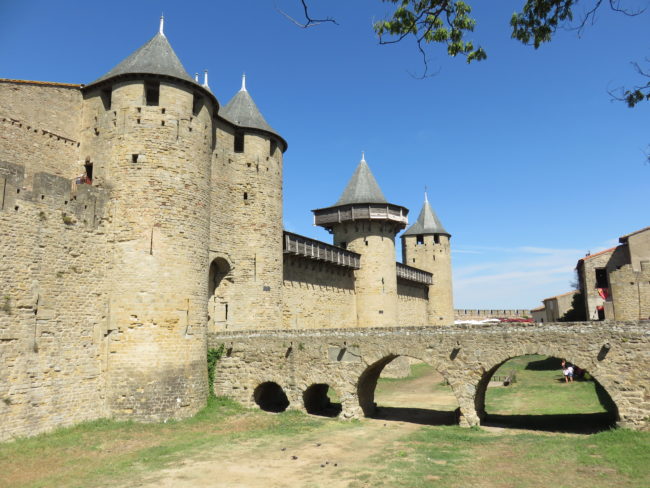
We caught the train, which runs fairly regularly between Toulouse and Carcassonne (plan your return train so you don’t have to wait around), and only takes about 45 minutes. As we stepped off the train and into the glorious sunshine, we were met with the sparkling waters of the Canal du Midi. We watched as a canal boat slowly made its way through the lock. This canal is part of a UNESCO World Heritage network of navigable waterways that stretches 360 km. It links the Mediterranean and the Atlantic. My husband loves the idea of a canal boat holiday, and although I’ve not been particularly keen, the thought of exploring these beautiful waterways was tempting.
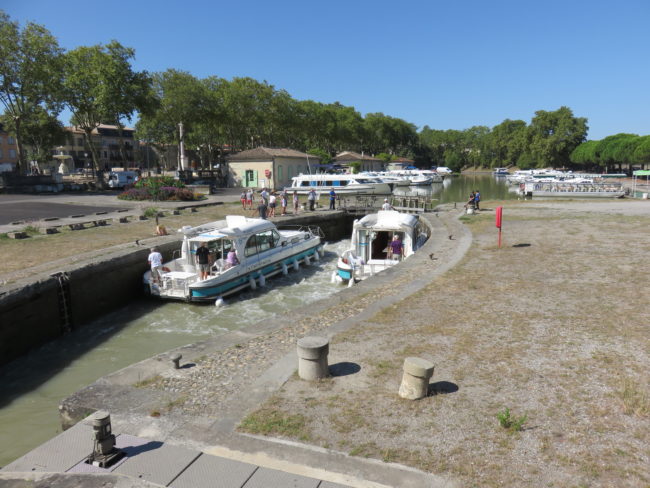
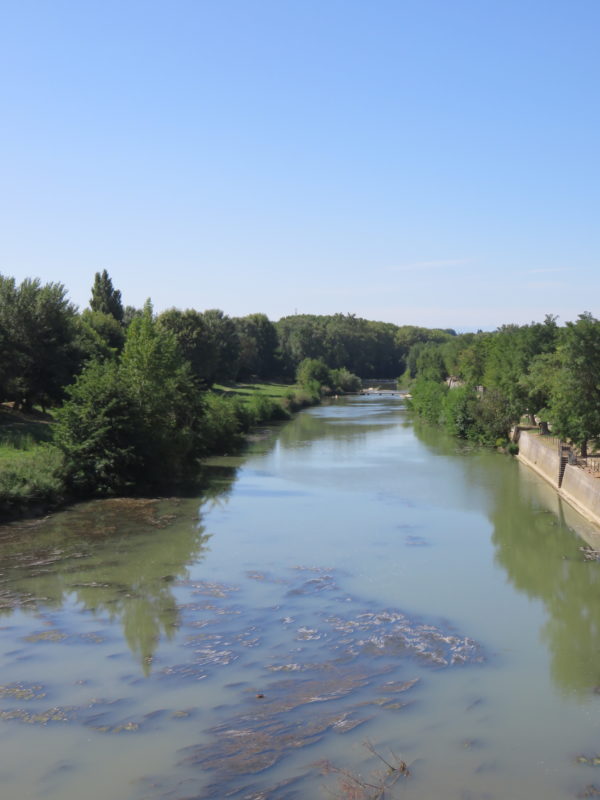
The walk from the train station, through the town, and up to the walled fortress takes about 30 minutes. It is mostly flat, except for the final road that takes you up to the medieval citadel. However, if you have limited mobility, there is a limited mobility tourist road train that takes visitors from the train station up to the fortress, with stops along the way. There is a suggested walking route which we followed (see the image of the tourist map below) that takes in the main sites of Carcassonne and the medieval citadel. Carcassonne’s commercial area is worth exploring because there are some interesting historic sites along the way, including historic churches and remnants of the old city walls and gates.
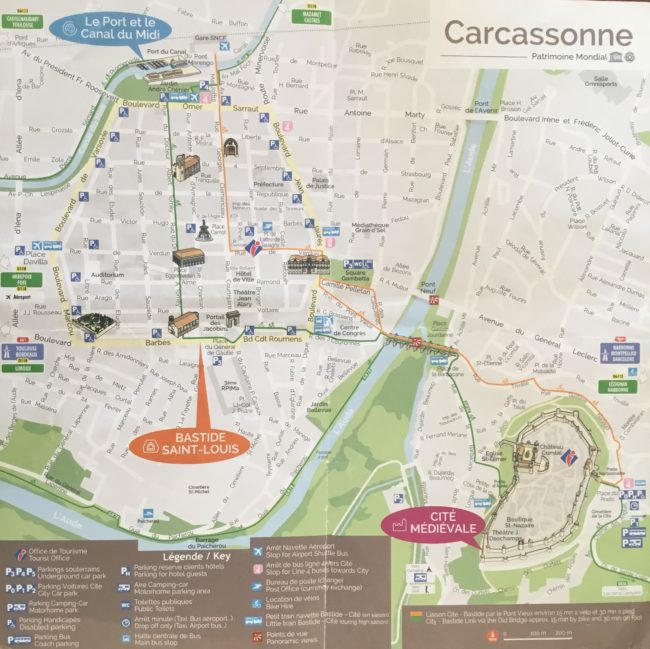
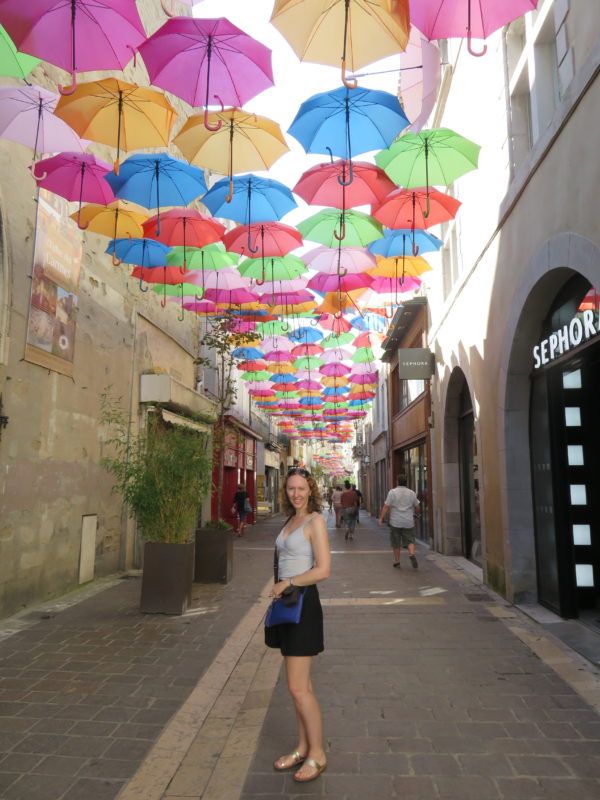
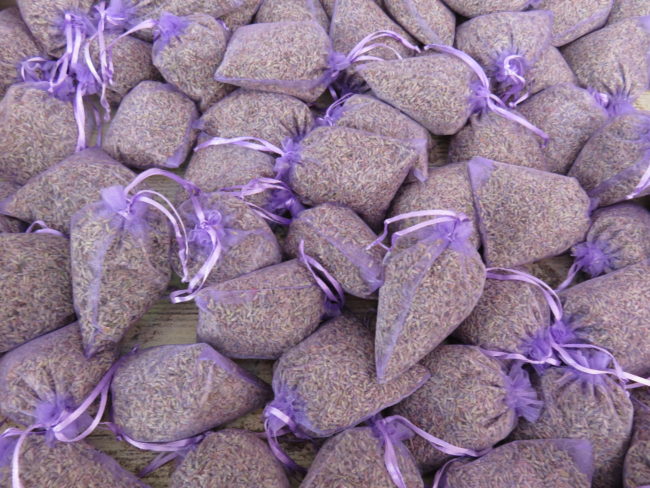
Carcassonne is not a large town, but it has a lovely laid back vibe. We headed up Rue Georges Clémenceau, which was delightfully covered in colourful umbrellas. There are some nice shops in Carcassonne. I bought myself a bag of heavenly scented lavender buds for only €1. We walked past the peaceful town square, Place Carnot, with its waterfall and cafes, and up to Portail des Jacobins, the only remaining entry gate of the four that once stood. To the right of it is the remains of the rampart, the defensive wall that once protected the town.
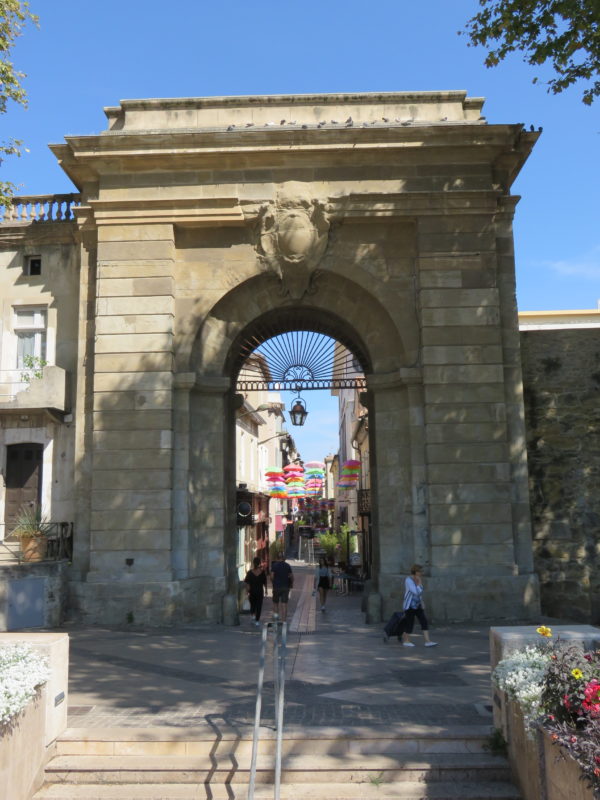
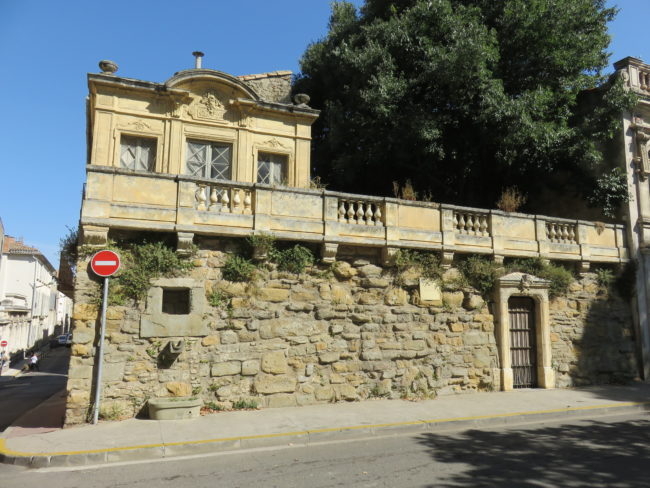
We continued to Notre Dame de La Sainte, a little chapel which sits beside Pont Vieux, the bridge you cross to get to the medieval citadel. The bridge crosses the beautiful river Aude and provides a good viewing point of the citadel that sits proudly on the hill overlooking the town. We continued up Rue Trivalle, which has several restaurants and cafes dotted along it. If you go further up the road, there are some themed artwork on the stone walls that gets you into the medieval spirit.
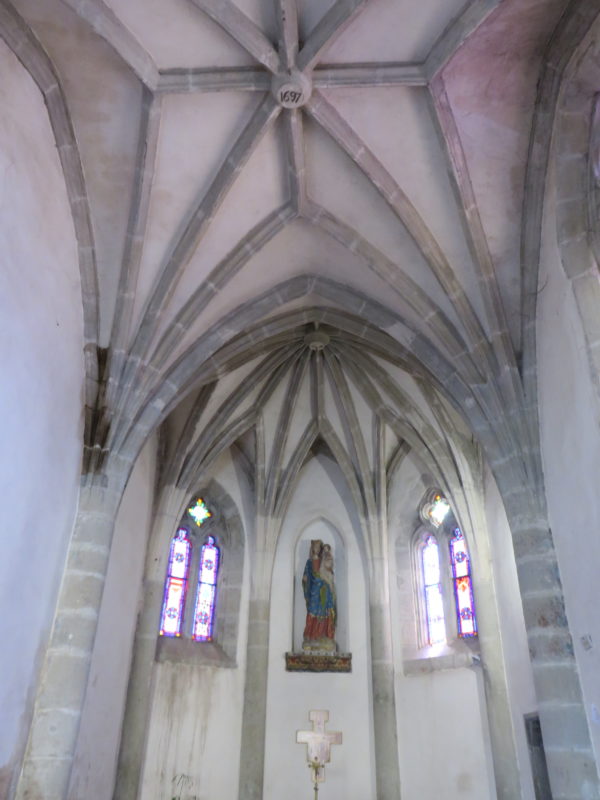
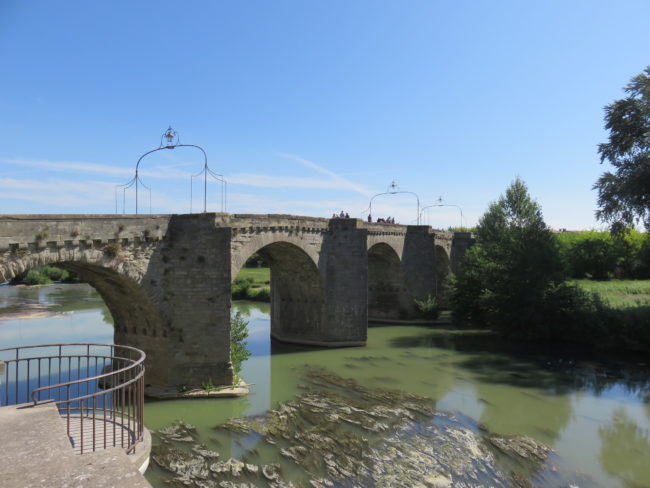
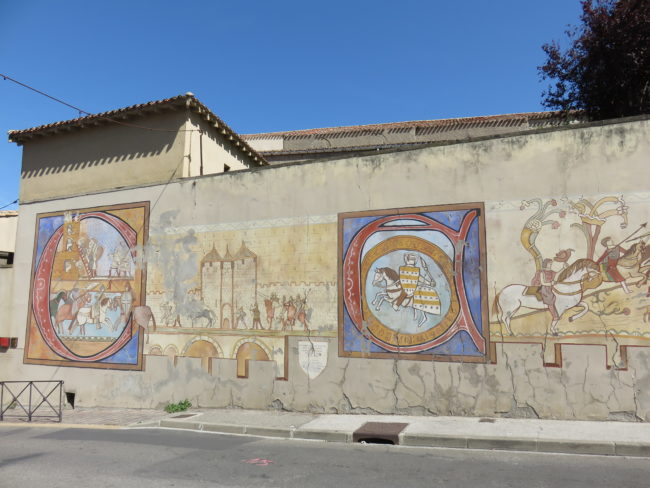
To get to the citadel entrance, you need to turn off Rue Trivalle onto Rue Gustave Nadaud. It’s not particularly well signposted. This road then leads you up the hill to the main entrance of the medieval citadel, Porte Narbonnaise. The entrance to the fortress is like a fairy tale castle with its turrets, watchtowers and narrow cobblestone streets. The medieval citadel is free to enter, but you do need to purchase a ticket to visit the Château Comtal (which includes the ramparts), which sits inside the walls. You purchase these tickets at the entrance to the Château.
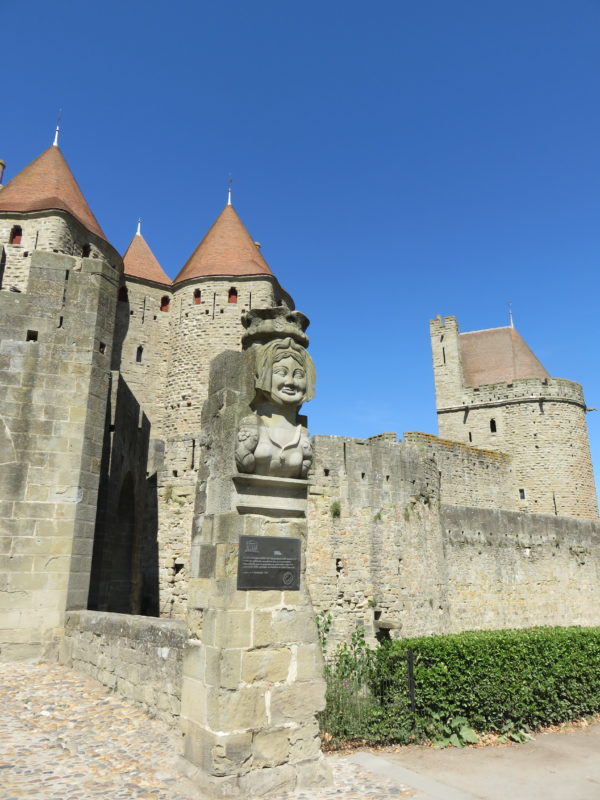

Before heading into the citadel, we popped in to visit the small cemetery, Cimetière de la Cité, which sits to the left of the main entrance. Most tourists miss it, but it is worth exploring as it has a lovely garden and interesting tombs. It is also quite peaceful compared to the hustle and bustle of the citadel, and you can also get some good views and shots of the turrets.
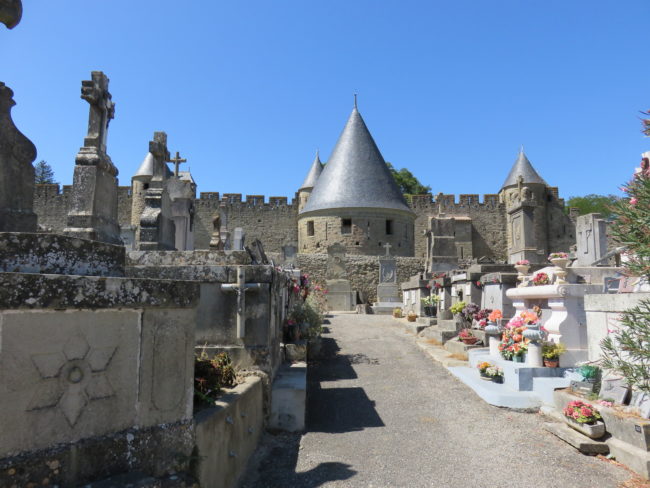
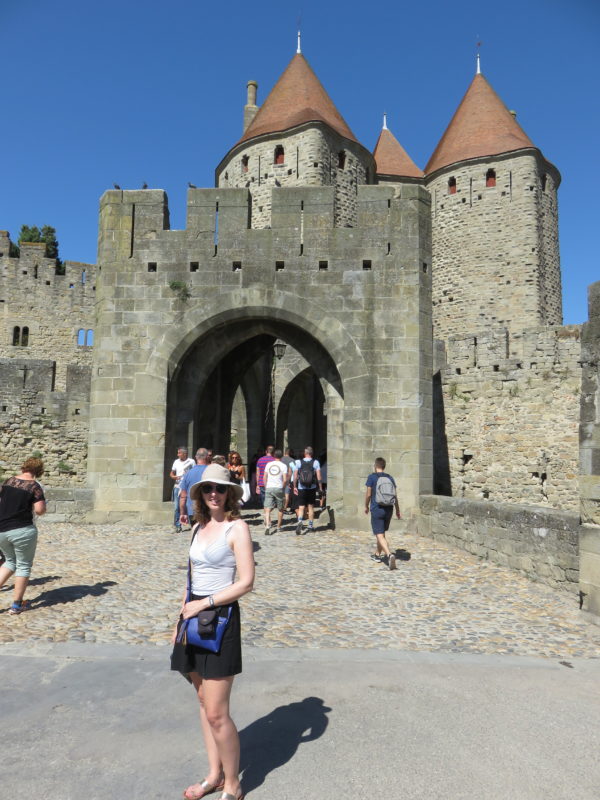
After heading into the citadel, we spent some time gaping and gasping at the beauty of it, then grabbed a refreshing ice cream, as it was starting to get very hot. Whilst enjoying our ice creams, we wandered through the labyrinth of narrow, ancient cobblestone streets, crowded with tourists and shops. It’s easy to get disoriented and lose your way here. We then headed over to line up for tickets to the Château Comtal. We didn’t have to wait long, as it was September, the main summer tourist rush was over. You can get an audio guide, and there are also free toilets available onsite.
The Château is not furnished, but there is still plenty of wonderful architecture to admire. We followed the walking route around the Château, which is marked with arrows. I suggest you do the same because this way you don’t miss any of it. The trail leads you through dark rooms where rich and powerful people once slept and made merry, and to the walls where sentries stood and kept watch for invaders.
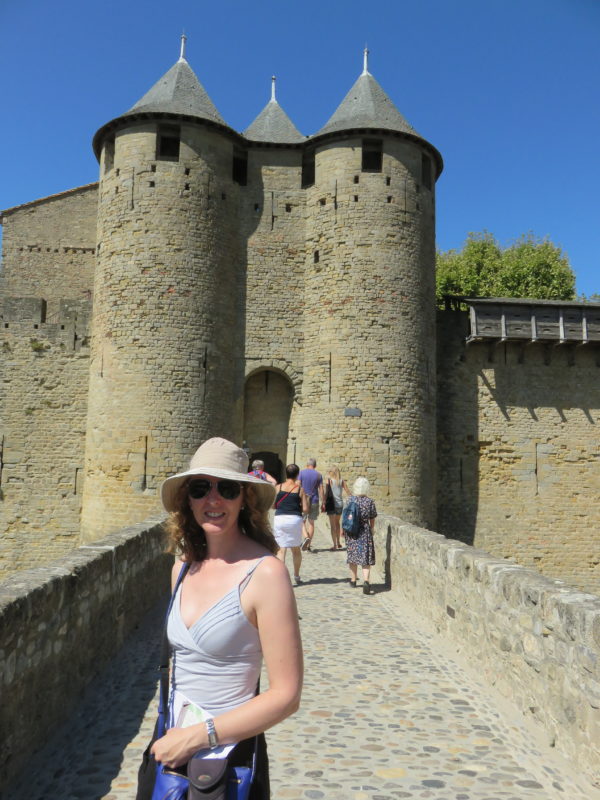
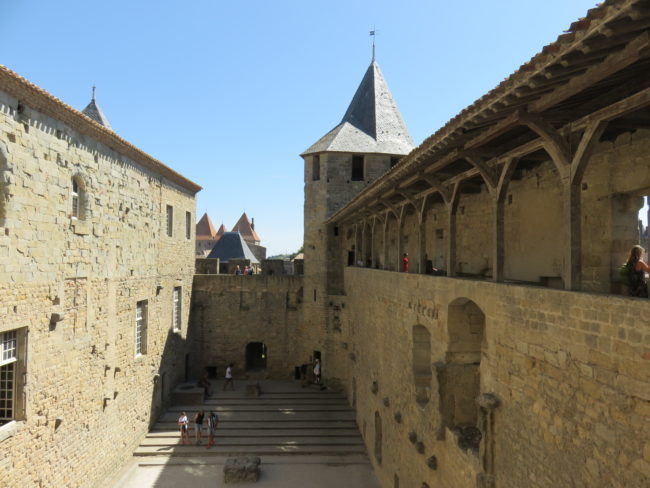
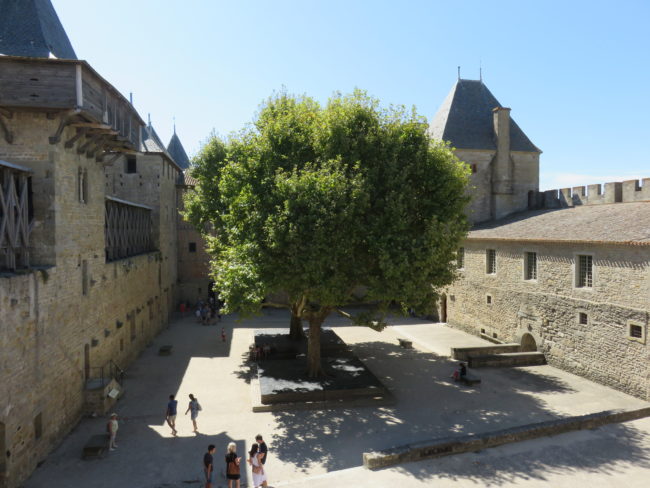
Some of the main highlights of the Château include the Keep, which is a four-storied square shaped tower that has a vaulted hall and 13th century paintings, and the ramparts (defensive walls) that you get to walk around. They provide stunning views over Carcassonne and its surrounding countryside.
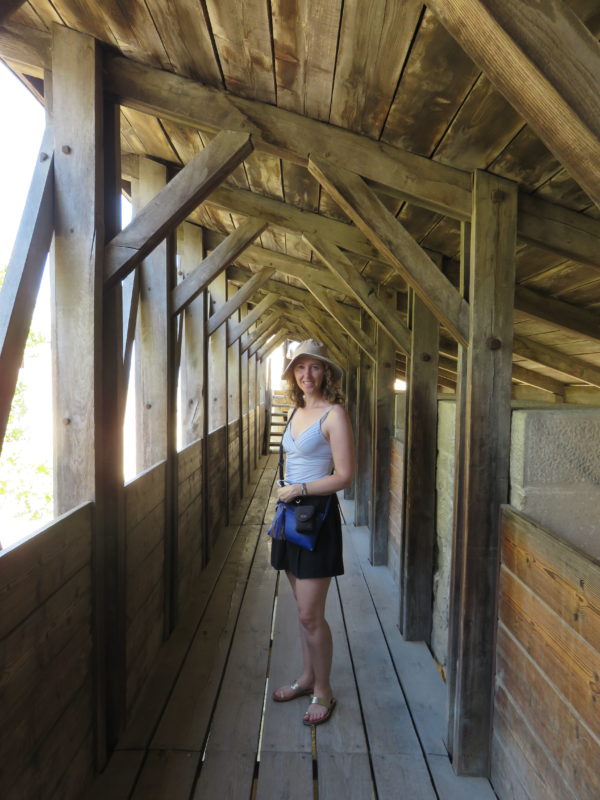
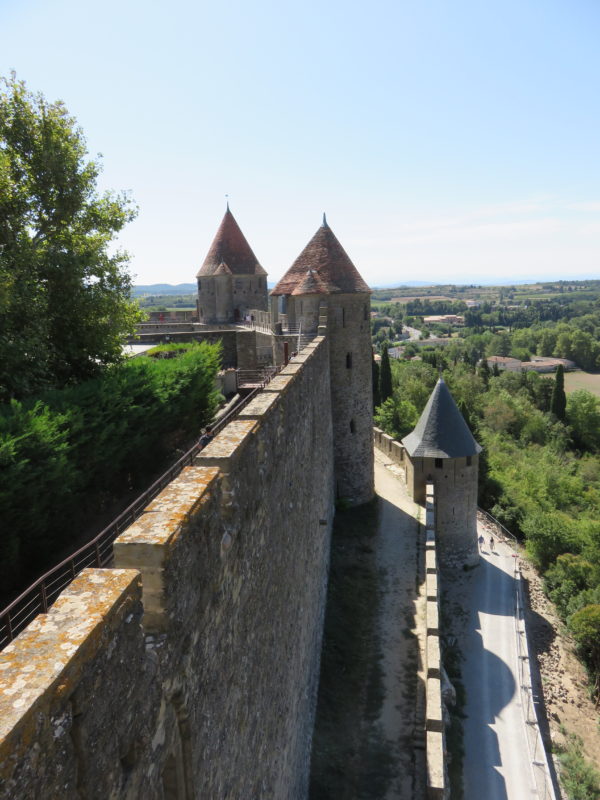
The exit from the Château takes you past the Théâtre Jean-Deschamps, a huge outdoor theatre set against the southern wall. Apparently, they host outdoor concerts here. What an amazing backdrop for a concert. I can imagine it would be an awesome experience. Beside the theatre is the Basilique Saint Nazaire, a 12th-century Gothic-style church. It is free to enter and has some beautiful stained windows to admire.



After resting under the trees by the church and enjoying a picnic lunch, we finished exploring the medieval city whilst enjoying yet another ice cream (it was very hot), and we then exited through the back gate, Porte d’Aude. Whilst we were visiting, they had attached some temporary, contemporary artwork to the castle, which consisted of large concentric yellow circles. It was done by the contemporary Swiss artist Felice Varini who is famous for creating illusions of flat graphics superimposed on three dimensional spaces using a technique called anamorphosis. It must have been quite a feat attaching this accurately to give it this effect. Apparently, they had the local art students do it. I personally loved it and thought it was impressive, but I read that there were a lot of very unimpressed locals who started a petition to remove it. It was due to be removed at the end of September anyway, so I’m glad we got to see it.
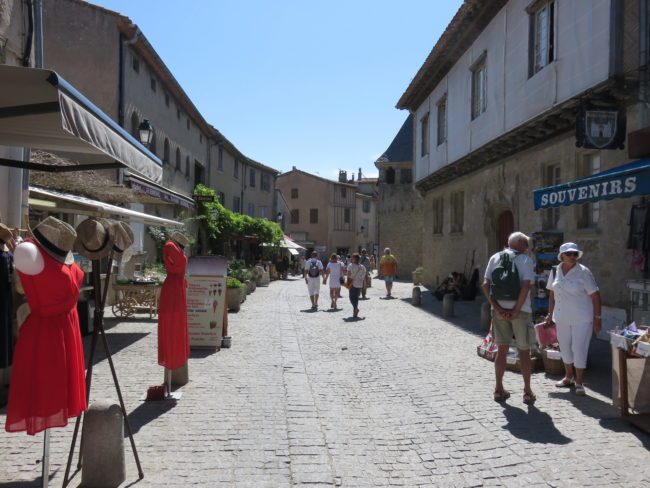
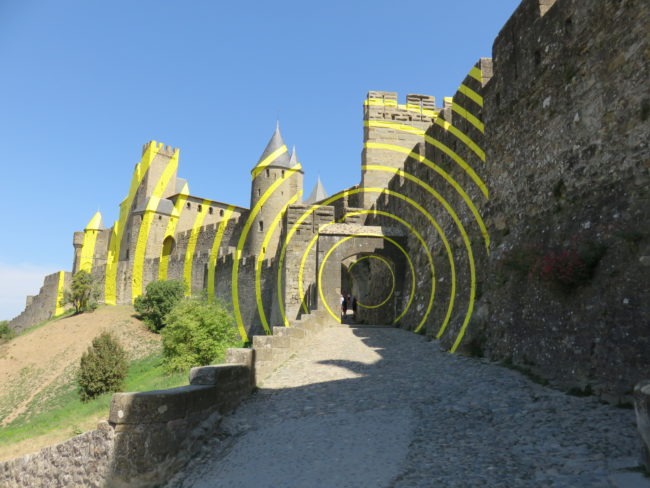
On our way back to the train station, we continued following the loop on the suggested walking route and headed down Rue du Docteur to finish seeing the sites of Carcassonne. I would love to have had more time in Carcassonne and to walk along the path that leads around the canal. Carcassonne would be a lovely place to stay for a few days, so I’ve included some of the best accommodation options available below.
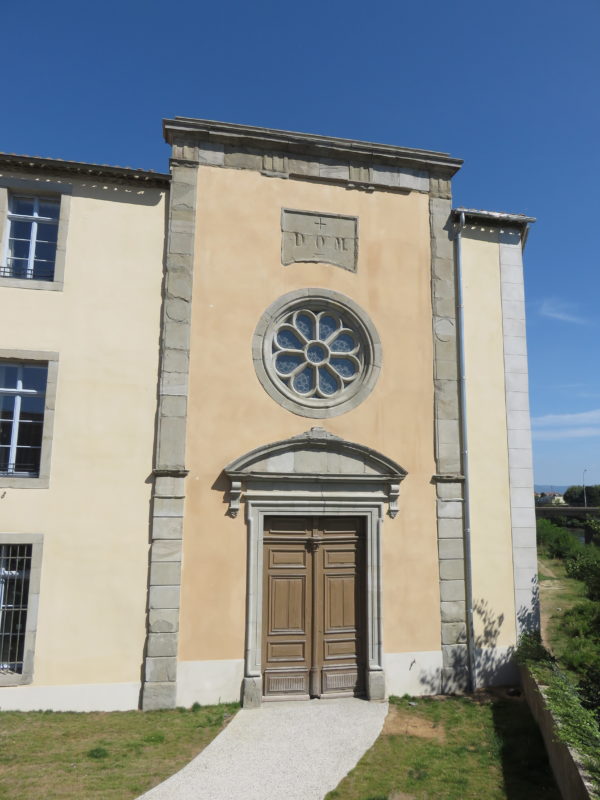
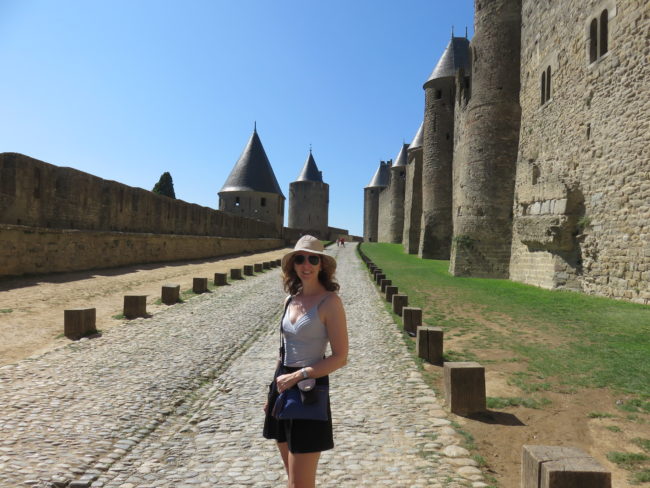
Practical Tips for Visiting Carcassonne
- How long should I spend in Carcassonne? We happily filled an entire day in Carcassonne exploring, however, if you only want to see the citadel, then you could squeeze it into a half day. If you enjoy slow travel, then stay the night. I’m sure the citadel looks amazing lit up at night.
- Getting to Carcassonne
- Train: Carcassonne is connected to the main rail line, so you can get a train here.
- Fly: Carcassonne has a small airport that Ryanair flies in and out of.
- Drive: If you are driving, Carcassonne is beside the A61 Autoroute des deux mers motorway, that runs from Bordeaux to Narbonne. For the old city, take exit 24, signposted Cité Médiévale. From Paris or from Calais, the easiest access is via Orleans, Clermont-Ferrand, the A75 and Béziers. There is plenty of car parking (fee applies) by the medieval citadel main entrance.
- Carcassonne Tourist Information Centres
- In the commercial area 28 Rue de Verdun, 11000 Carcassonne
- By the Pont Vieux bridge 2 Square Gambetta, 11000 Carcassonne
- In the medieval citadel Impasse Agnés de Montpellier, 11000 Carcassonne
- Getting around Carcassonne: It is walking distance from the train station to the citadel and there are some lovely historic sites along the way, however, if you have mobility issues there is a little tourist road train that collects you from the train station and takes you to the main gate of the city walls with a few stops along the way.
- Shopping in Carcassonne: The shops are closed on Sundays and on Monday mornings. But don’t panic, you can still find restaurants and bakeries that are open, particularly in the tourist areas. Just make sure you check the opening times before heading out to avoid disappointment. In the citadel, most tourist shops and restaurants are open 7 days a week.
- Eating and drinking out in France: Due to the different licensing in France, some café’s and restaurants are only licensed to sell alcohol with food, so in order to drink, you must also order food. Bars have a different license that allows them to sell drinks without food. From my experience, establishments do try to make this clear to tourists, but it does end up confusing for some.
- Language: French. Here are a few French words to get you started:
- Yes = oui (wee)
- No = non (no)
- Please = sil vous plait (seal voo play)
- Thank you = merci (mare-see)
- Hello = bonjour (boh(n)-zhoor)
- Good evening = bonsoir (boh(n) swarh)
- Currency: Euro
- Tipping: The service charge is included in the bill, so there is no need to tip.
- Electricity: The electrical current is 220-240 volts, 50-60 Hz. Wall outlets take the European two round prong plugs. However, you are better off purchasing a worldwide adaptor that can be used in France as well other countries. At least then you can potentially get some further use out of it on future vacations. If you’re taking a number of electronics with you, then I would recommend purchasing a couple of these adaptors.
- Navigating: We used Google’s free Offline Maps. Google Offline Maps allows you to access free maps for navigating that can be used offline i.e. you don’t need WIFI, data, or roaming to be able to use them. Follow this detailed guide on how to use Google’s Offline Maps. Using your phone as a GPS will drain your battery quickly, so use a portable battery charger which you can use to charge your phone and any other USB chargeable devices. To get a paper map of the town and medieval citadel, then pick one up at the Carcassonne Tourist Information Centres listed above.

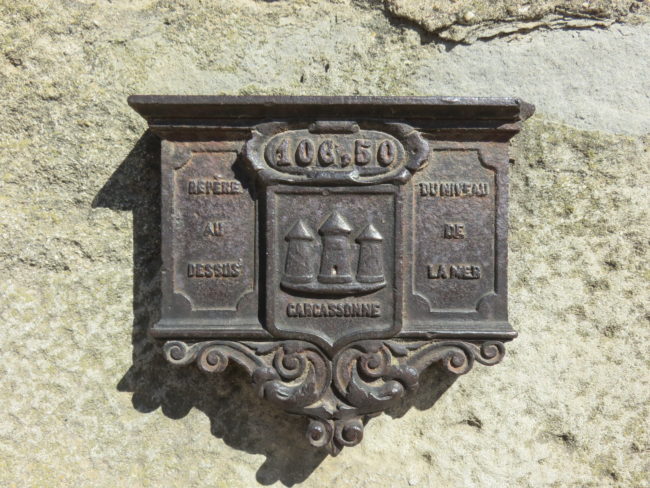

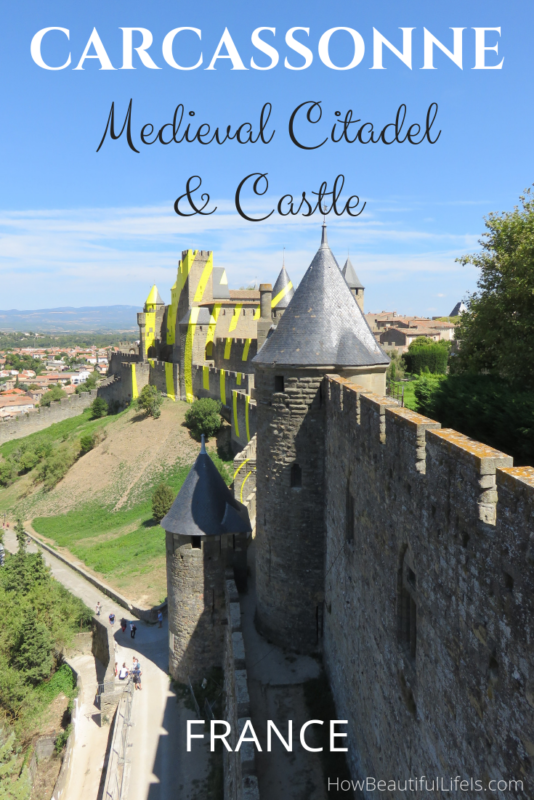
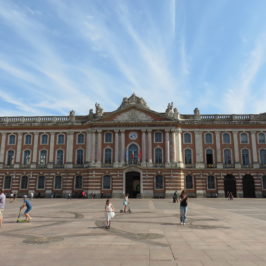

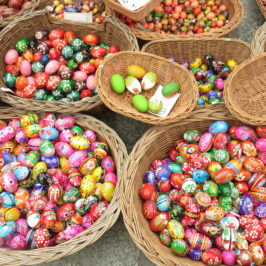
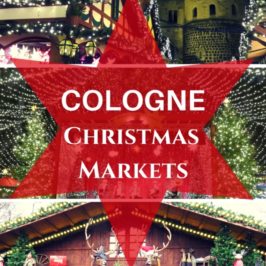
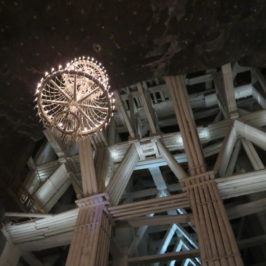
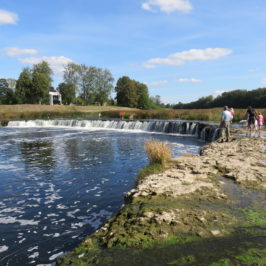
Leave a Reply